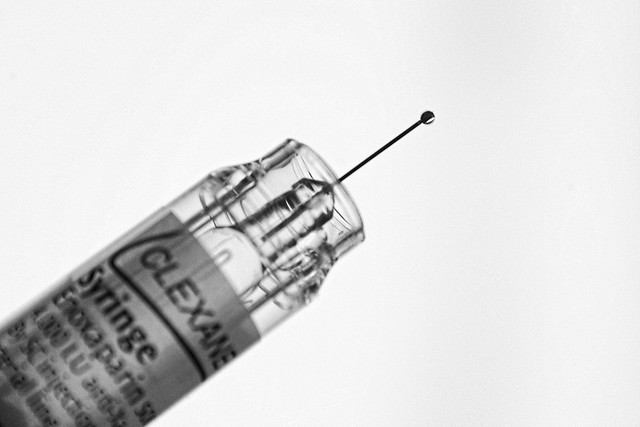I have been fretting recently about sharpening, particularly of images being shown on the web, in blogs such as this one. Common wisdom has it that sharpening should be the last thing done to an image, but when images are being hosted by third-party photo services, it can be difficult to control exactly how sharpening is applied. More...
Last October Adobe acquired Typekit, a handy service that serves out fonts for web pages, and which this blog uses, for a fee of $49/year.
Logging into Typekit today to fiddle with fonts (easier and sometimes more satisfying than actually writing content), I notice that customers are now being prompted to update their accounts to use Adobe ID. Sigh. Perhaps I have an Adobe ID (I blank out the tedium of creating all these IDs and accounts as you buy things on the web), perhaps not. But I don’t particularly want to change, and I don’t see why Typekit wants me to — this has everything to do with the internal structures of their business and nothing to do with the customer. It smells like the infamous Yahoo ID putch that marked the beginning of Flickr’s decline after being acquired by Yahoo! If the same pattern is followed, it is only a matter of time before the new ID becomes mandatory.
So perhaps I should investigate Google web fonts? If I’m going to forced to use some corporation’s ID scheme to get the fonts I want, at least with that one I won’t be charged at the same time …
 Last of the Clexane by alexbrn
Last of the Clexane by alexbrnFive weeks ago I left hospital after undergoing an open partial nephrectomy to remove a suspicious 3cm tumour from my right kidney. The experience was not as bad as I anticipated. Hospital itself was made bearable by an internet connection, and the tweets, chats and emails from well-wishers (thank you all – it makes a huge difference!). After three nights I was back home. After a week I was off pain-killers. After three weeks I found myself bounding up stairs two-at-a-time again — and now … I am almost back to normal, with only an occasional twinge to remind me of my wound.
Today I returned to Addenbrooke’s to discover the results of the histopathological analysis that had been performed on the tissue removed from my body. The findings were:
- As suspected, the tumour was cancerous. The cancer is Renal Cell Carcinoma without any complicating sub-types. This is the most common type of kidney cancer.
- The tumour is categorized as Stage 1 (on a scale of 1 – 4) – that is, small and completely contained within the kidney.
- There is no evidence of spread to surrounding tissue.
- The tumour’s Grade is II (on a scale of I – IV); where I is the least aggressive, and IV the most aggressive, cancer.
“How long have I got?”
I was slightly annoyed in the the run-up to my operation by a publicity exercise from Macmillan Cancer Support, whose publication of updated figures for median cancer survial times was accompanied by a widely-reported sound-bite from their chief executive:
“Finally we can answer the big question: ‘How long have I got?’”
Well, no. We can’t answer that question as everybody’s situation is distinct. If our lives were governed by probabilities I would not have cancer in the first place! A more scientific (and, maybe, more optimistic) approach to making sense of cancer statistics comes in Stephen Jay Gould’s excellent essay The Median Isn’t the Message. In my particular circumstances however the outlook is good: Cancer Research UK reports that for Stage 1 cases such as mine:
[w]ith a less aggressive cancer (grade 1 or 2 kidney cancer) about 94 out of every 100 people (94%) diagnosed live for at least 5 years after diagnosis.
So, especially given that the sample for these figures will contain a large proportion of elderly people, I will cheerfully take those odds.
Watchful waiting
So life returns, if not to normal, then at least to some semblance of it. My next medical appointment is a follow-up CT Scan in three months to check the result of the surgery and state of my organs. All being well, the follow-up regime may revert to a yearly ultrasound scan – since I am “young” it would be unwise to accumulate a large radiation dose from repeated CT scans for the rest of my life, which (I am told) I can now reasonably expect to last a long time …
 Alex3 by FreddieBrown
Alex3 by FreddieBrownAnd so, unexpectedly swiftly, I find I am to present myself at Addenbrooke's at 07:00 this Saturday to be admitted for an open partial nephtectomy (following the recent diagnosis of suspected kidney cancer).
Laparoscopic vs open surgery
I have avoided hospital all my life so far, so the sudden prospect of major surgery is a little daunting. I discussed various surgical options with my consultant – I was attracted by the idea of laparoscopic surgery, but perhaps only because my inner geek was interested in having a robot involved in the procedure (the hospital has a da Vinci Surgical System). The chief advantage of the laparoscopic approach is that it is less invasive and therefore tends to have a shorter recovery time – and exhibiting perhaps a dry sense of humour the consultant observed I was probably “keen to get back to the gym”.
However, in my sort of case the Cambridge team tends to favour open surgery. This is in part because they can dump ice into my body cavity during the operation, so that the (cooled) kidney remainder dies a little less as a result of the necessary ischemia, but also because of the “endophytic cyst” that has been found in the centre of the kidney. Ah yes, that cyst. The doctors seems sure this is nothing to worry about, since many people develop simple (fluid-filled) renal cysts at some time. However just to be sure the surgical team will perform an ultrasound scan on my exposed kidney to confirm whether this cyst really is as simple as it appears, and if not – cut it out. Given that I am learning that doctors are practised in the art of gradual disclosure, I feel a little nervous about this.
Radical vs partial
There was also the question of whether to have the whole kidney removed (radical nephrectomy), or just the diseased part. The thinking here is that for smaller tumours (such as mine) it is better to preserve some kidney, and so some kidney function, where possible. This is not so much based on direct clinical evidence – since one kidney always takes-over so over effectively when the other is removed this would be hard to measure – but on logic: if something else goes wrong with the remaining kidney later, it is surely better to have preserved whatever one can.
Retail therapy
Faced with various discomforts ahead, I decided I needed to treat myself to some compensatory camera equipment, and plumped for a second-hand Nikon D700. This is a camera that Nikon is about to discontinue, but has many points in its favour:
- It’s now been around long enough (since 2008) that second-hand ones are available at reasonable prices.
- It’s a “full-frame” camera, with all the attendant benefits that brings – particularly in ultra-wide lens choice, which intereste me.
- Unlike some Nikon models this has happy colours.
- It’s so well-established that supporting software (such as my favourite RAW converter, DxO Optics Pro) is thoroughly de-snagged.
I’ll post some more thoughts on this camera when I’ve had a chance to use it more, but in the meantime … Merry Xmas!